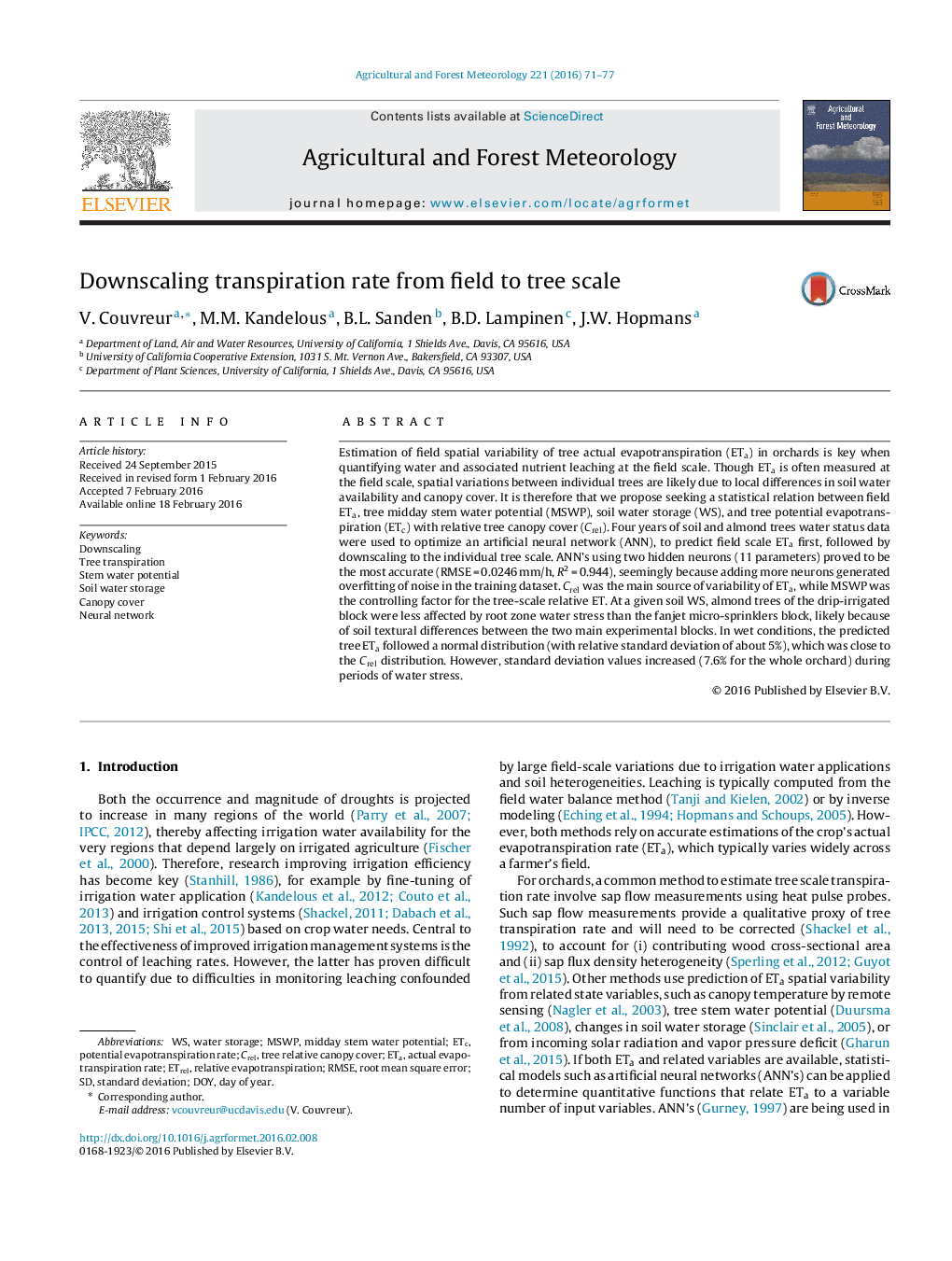| Article ID | Journal | Published Year | Pages | File Type |
|---|---|---|---|---|
| 81364 | Agricultural and Forest Meteorology | 2016 | 7 Pages |
•A neural network was trained to predict almond evapotranspiration rate (ETa).•Tree relative canopy cover controlled ETa variability (5%) in wet conditions.•Midday stem water potentials beyond −1.5 MPa increased ETa variability to 7.6%.
Estimation of field spatial variability of tree actual evapotranspiration (ETa) in orchards is key when quantifying water and associated nutrient leaching at the field scale. Though ETa is often measured at the field scale, spatial variations between individual trees are likely due to local differences in soil water availability and canopy cover. It is therefore that we propose seeking a statistical relation between field ETa, tree midday stem water potential (MSWP), soil water storage (WS), and tree potential evapotranspiration (ETc) with relative tree canopy cover (Crel). Four years of soil and almond trees water status data were used to optimize an artificial neural network (ANN), to predict field scale ETa first, followed by downscaling to the individual tree scale. ANN's using two hidden neurons (11 parameters) proved to be the most accurate (RMSE = 0.0246 mm/h, R2 = 0.944), seemingly because adding more neurons generated overfitting of noise in the training dataset. Crel was the main source of variability of ETa, while MSWP was the controlling factor for the tree-scale relative ET. At a given soil WS, almond trees of the drip-irrigated block were less affected by root zone water stress than the fanjet micro-sprinklers block, likely because of soil textural differences between the two main experimental blocks. In wet conditions, the predicted tree ETa followed a normal distribution (with relative standard deviation of about 5%), which was close to the Crel distribution. However, standard deviation values increased (7.6% for the whole orchard) during periods of water stress.
